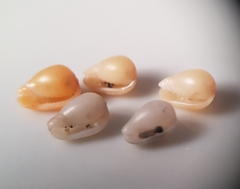Pteriomorphs
Pteriomorphia
Pteriomorphia is a significant subclass of marine bivalve mollusks, known for their unique features and ecological importance. This group includes several families of bivalves like oysters, mussels, and scallops, many of which are familiar to the Comunidad Valenciana and are commonly referred to by their local names.
Members of this subclass are characterized by the following features:
- Marine habitat: Pteriomorphia bivalves primarily inhabit marine environments, often found attached to rocks, submerged surfaces, or burrowed in sand and mud within coastal regions.
- Shell Structure: These bivalves usually have robust, thick shells that can vary widely in shape and size. The shells are generally composed of aragonite and may exhibit distinct color patterns and surface textures.
- Feeding Mechanism: They are filter feeders, using their gills to trap plankton and other particles from the water. This method of feeding plays a crucial role in maintaining the health of marine ecosystems.
- Economic and Ecological Importance: Many Pteriomorphia species, such as those from the pearl oyster and mussel families, are cultured and harvested for food, pearls, and shell products, contributing to the local economy and culture.
These mollusks are not only vital for biodiversity but are also integral to the local traditions and cuisines of coastal communities in places like the Comunidad Valenciana. They are commonly found in traditional recipes and are essential to the region's culinary heritage.







